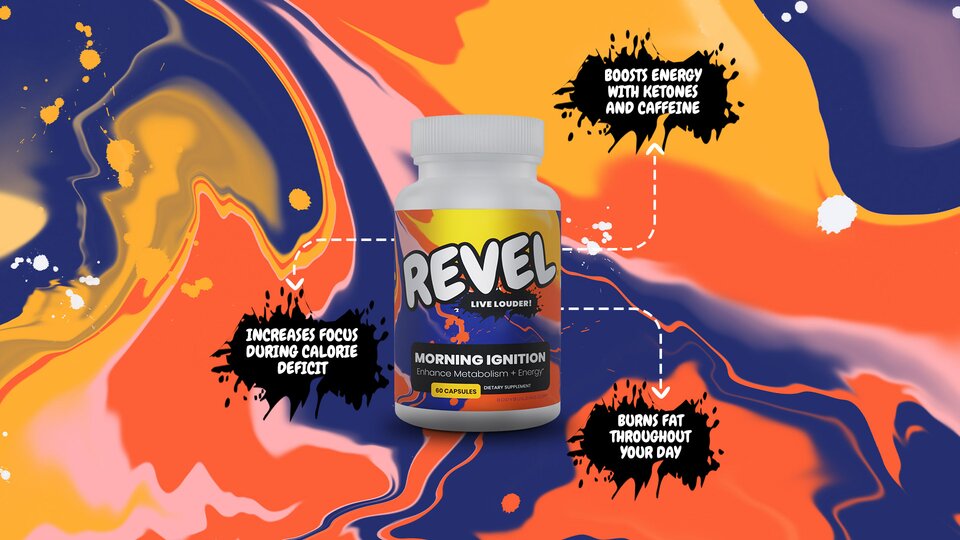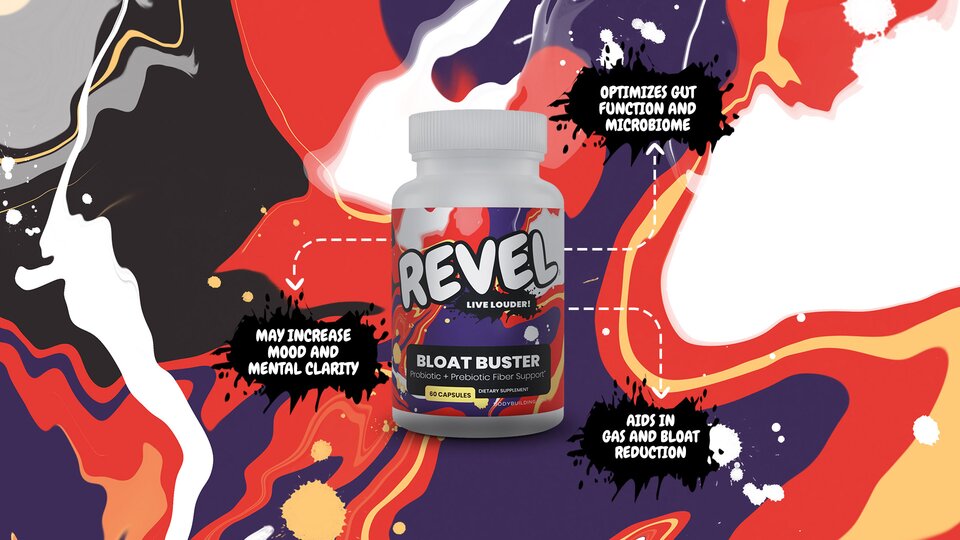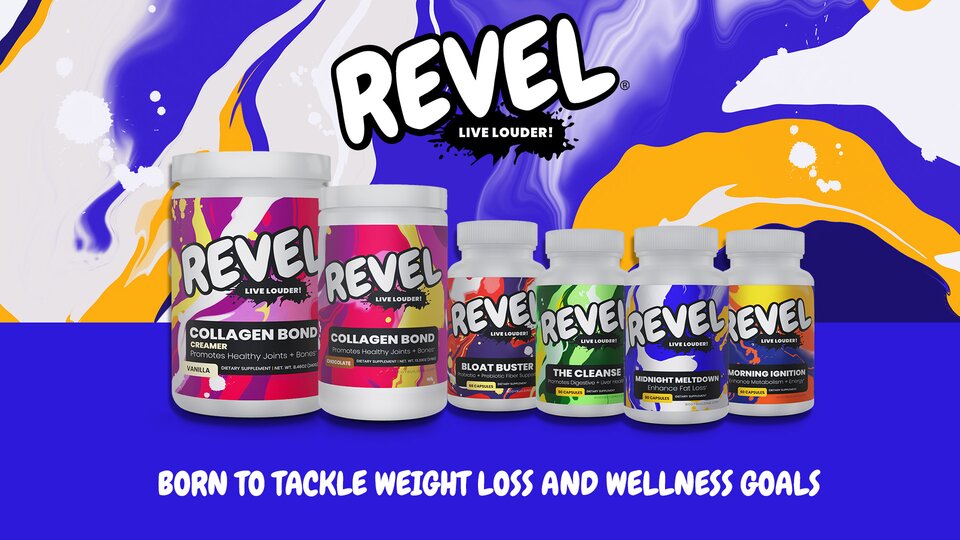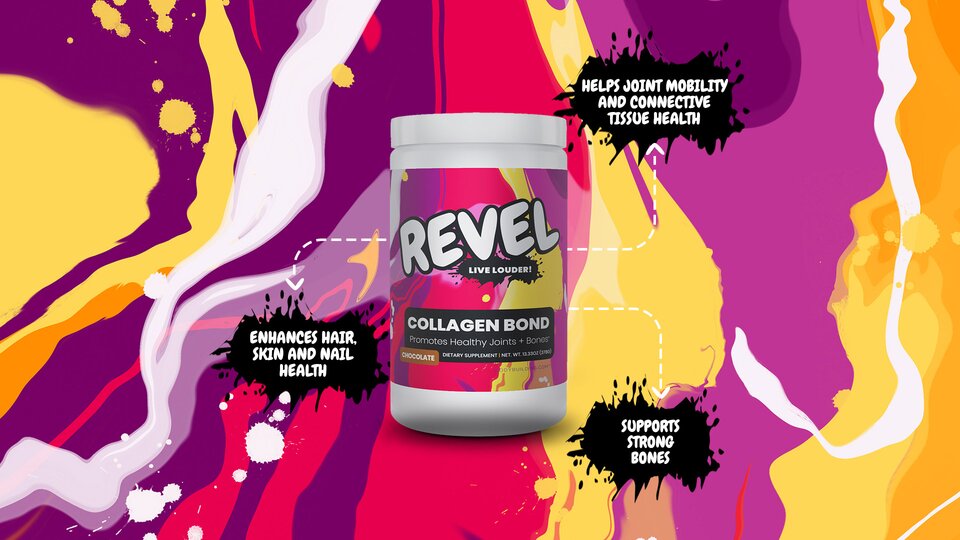If you are new to fitness or you are simply stuck in your current mode of low-to-moderate intensity workouts, HIIT can be intimidating. You’ve probably heard about the countless benefits and you see all the best trainers touting HIIT workouts as the best kind of training for building and maintaining muscle while losing weight and fat in a time-crunched manner
But you are still hesitant about starting. Maybe you don’t know how to format a HIIT workout, maybe you don’t know what HIIT exercises are good for beginners, or maybe you are just not motivated enough. In any case, and no matter what the excuse is, this post is here to get you ready for HIIT training.
We are covering all the bases of HIIT, and the good news is, it isn’t complicated. In fact, the concept and workouts are simple. However, HIIT workouts, even with beginner exercises, will be brutal. You’ve been warned.
Table of Contents:
- What Is A HIIT Workout?
- Types Of HIIT Workouts
- HIIT Exercises & Workouts For Beginners: How To & Programming Tips
- HIIT Benefits
- How Often You Should Do HIIT Workouts
- HIIT Workout Results
- Best HIIT Beginner Exercises
- HIIT Workouts For Beginners
- HIIT Workout Schedule
If you don’t want to get shredded, ripped, cut, lean, or whatever you want to call it, stop reading now…But if you are like us, wanting to get into the best shape of your life, continue on.

What is a HIIT workout?
HIIT is an acronym for High-Intensity Interval Training. As the name suggests, HIIT workouts are very intense, and the rest periods are done using strict intervals. To simplify it, a hiit workout incorporates full-body, compound exercises, typically bodyweight exercises only, which are done in short, intense bursts, at nearly one hundred percent of your max effort, followed by short, sometimes active rest.
For example, 20 seconds at max effort doing a full-body exercise like burpees, followed by 10 seconds of rest, and repeat this interval 20 times. That’s a HIIT workout.
HIIT workouts can use various work to rest structures, but the work time will rarely go over 30-40 seconds per set, as it is extremely difficult to go all out for more than that, not to mention, maintain that same effort over the length of the workout, which can range from 5-30 minutes (however, generally in the 10-20 minute range).
To get sciency with it. A HIIT workout alternates work intervals of 85 to 95 percent max heart rate and rest periods that won’t drop your heart rate below 60 to 65 percent max. If you aren’t in this range, you aren’t doing HIIT.
If you have a heart rate monitor, you will know whether or not you are in this range. If not, then use your best judgment. You will know if you are pushing yourself to the max, but the rest period can get tricky, so when in doubt, keep moving (i.e. jog in place).

Types of HIIT Workouts
Here are a few HIIT workouts. Read through them, that way you will understand how to do HIIT workouts. Later in the article, we will show you the best HIIT exercises for beginners and we will provide a few more HIIT workouts…
1. Tabata:
TABATA is probably the most famous HIIT protocol. It involves one full body exercise, done for 20 seconds at max effort, interspersed with a brief 10 seconds recovery. TABATA workouts typically last 4-10 minutes. So if it was a 10 minute Tabata workout, you’d have done 20 sets, which is 6.6 minutes of work. This allows a quick workout to pack a big punch.
2. Sprints:
Sprint HIIT workouts are very straight forward. There are three easy ways to go about it.
- 8-second sprint followed by 12 seconds of jogging. Do this for 10-20 mins.
- 30-second sprint followed by 4 min run. Do this for 18-30 mins.
- Tempo run: 40-yard sprint, walk back to the starting line and repeat as soon as you reach the line. Do this for 10-15 mins.
By definition, sprinting is running at full speed, which means you will be giving it your max effort at every sprint.
Make sure to warm up with dynamic stretches and a few laps before doing sprints/HIIT. Moreover, start your first sprint at 80% and work your way up to 90-100%. If not, you are at risk of an injury like a pulled hamstring. If you’re looking for some sprinting inspiration, be sure to check out our HIIT treadmill workouts!
Cycling: You can do HIIT workouts in similar ways with cycling on a stationary bike or on a road bike. We’ve got great HIIT recumbent bike exercises for you to check out.
3. 15/35, 20/40, 30/30:
You can structure your work to rest ratio in various way. Just make sure you can give it max effort each set.
So, you could do workouts that use 15 seconds work, 35 seconds rest or 20 seconds work, 40 seconds rest or 30 seconds work, 30 second rest. This is good for beginners.
For more advanced fitness levels, you could do 40/20 (40 seconds work, 20 seconds rest).
For these kinds of workouts, you can do circuits of various HIIT exercises or just one exercise. It’s up to you!
In any case, the goal is to get up to 90-95% of your max heart rate each set, then when resting, not let it drop below 65%. So the work-rest intervals should be according to that. You do the exercise(s) at max effort, then the rest is just enough so you recover to 65-75% of max heart rate, then you go at it again. This will allow you to reap all the real benefits of HIIT workouts.

Is HIIT training good for beginners?
HIIT training is great for all levels. It will be especially effective for beginners. You will see results quickly and they will be noticeable. So, just because you are a beginner to working out, you should still employ HIIT into your workout plan (2-3 times a week).
The only difference between a HIIT newbie and a HIIT expert is an expert will have to work harder to achieve 95% max heart rate. This means different kinds of exercises are used for HIIT beginners than advanced HIIT trainees.
That being said, many of the exercises are similar, just beginners can do slightly easier variations…i.e. half burpees instead of full burpees. Even with the same exercise, you can control the intensity. For example, an intermediate HIIT trainee may do burpees just like an advanced trainee, but the advanced trainee takes the intensity up a couple of notches by being more explosive.
How do you do HIIT for beginners?
HIIT for beginners is done in the same manner as HIIT for the more advanced. The workout structure is similar as is the effort and goal (reach near-max heart rate interspersed with rest of no lower than 65% max heart rate). The only difference between beginners and more advanced levels is how you achieve your max heart rate. This means HIIT beginners can do different full body, explosive exercises, which would be too easy for the more advanced and wouldn’t allow them to achieve max heart rate.
All in all, the exercises chosen for a beginner HIIT workout will be as difficult for the beginner as the exercises an advanced person is doing during their advanced HIIT workout. Again, the effort should be the same. Just the way to reach that max effort is different.

HIIT Benefits
HIIT workouts are very effective. For many of the following fitness benefits, High-Intensity Interval Training is the best way to achieve them.
- Burn a lot of calories in a short time.
- High metabolic rate hours after exercising (which also helps increase overall metabolism).
- Lose fat without losing muscle (can even gain muscle using HIIT while cutting weight if you eat a high protein diet).
- Improves oxygen consumption and blood flow to muscles.
- Reduces resting heart rate.
- Reduces blood pressure (mainly for those who are overweight).
- Lowers blood sugar levels (great for people with type 2 diabetes).
Other benefits are: HIIT workouts are efficient, they can be done anywhere, and they don’t require any equipment. If you are short on time but you want serious results, HIIT is the way to go. However, you shouldn’t do HIIT every day as it will be too taxing on your body. You need to take the time to recover between HIIT sessions.
Comparing HIIT Training to Traditional LIIT Weightlifting and Steady State Cardio:
Let’s consider the above as we compare HIIT to traditional fitness regimens that involve cardio and weightlifting.
When comparing a 30 minute HIIT, weight training and running workout, research proves that HIIT is king for burning calories and improving metabolism.
Although HIIT workouts are typically less than 30 minutes, if you did a 30 minute HIIT workout, effectively, you’d burn up to 3 times the amount of calories as you would with a weightlifting or steady-state cardio workout (research study).
This means you could burn the same amount of calories as a 30 minute traditional workout in 1/3rd the time.
As for metabolic rate, like weightlifting and jogging, HIIT increases your metabolic rate. However, HIIT workouts are shown to keep high oxygen consumption for up to 24 hours (which relates to your metabolic rate), whereas weightlifting and jogging typically only increase oxygen consumption for a short period of time after the workout (research study).
HIIT workouts are comparable to traditional endurance workout in terms of metabolic rate, but they can be done in much less time.

HIIT Programming: Length & Frequency
HIIT workouts range from 5-30 minutes. However, HIIT is most effective in the 10-20 minute range. If you are a beginner to fitness, then aim for 10-15 minutes. If you are in good shape but new to HIIT workouts, go for 15-20 minutes.
Push yourself with each workout. If your HIIT workout isn’t killer, you aren’t going hard enough.
Ideally, you want to do 2-3 HIIT workouts a week. At a minimum, at least one. Your workout plan should include resistance training, cardio and stretching as well, so you will need to mix in HIIT workouts throughout the week in a manner that doesn’t make you susceptible to overtraining. You need time to recover from taxing workouts.
When to do HIIT workouts
If you are doing resistance training and cardio, your weekly plan can look like this:
Day 1: Resistance Training
Day 2: Cardio
Day 3: HIIT
Day 4: Rest
Repeat
or…
If you want to do two workouts a day:
Day 1: AM – Cardio; PM – Resistance Training
Day 2: Rest
Day 3: HIIT Workout
Day 4: Rest
Repeat

HIIT Workout Results
If you are doing 2-3 HIIT workouts a week, along with resistance training, you can expect to see some fantastic results. Of course, a proper diet and enough sleep is needed for the best results and adequate recovery.
You can start to see results from HIIT in as little as two weeks, but typically, within 3-4 weeks you should absolutely see some positive results. Again, this is dependent on your diet (the most crucial part of losing weight) and if you are doing proper HIIT workouts (not all circuit training is HIIT! Don’t be fooled).

What are the best HIIT exercises?
In general, the following types of exercises are great for HIIT workouts:
- Burpees
- Mountain Climbers
- Sprints
- Tuck Jumps
- High Knees
- Lateral Lunges with Hops
- Box Jumps
As you can see, explosive, full body exercises are what you want for HIIT workouts.
If you are a beginner, some of these exercises can be too difficult, especially over the length of a HIIT workout. So, that’s why we put together the best beginner HIIT exercises below.
18 Best Beginner HIIT Exercises
Paulina Kairys presents 18 fat-burning HIIT exercises for beginners. Use these exercises to create a killer HIIT workout that will get you shredded, toned, and swimwear ready.
See below for a list of these 18 beginner HIIT exercises (with timestamps) and a few beginner HIIT workout examples.
https://www.youtube.com/watch?v=/ubVQU57sjKQ
18 Best HIIT Exercises for Beginners:
1. Tempo Squats (0:05)
2. Lateral Squats (0:16)
3. Squat to Inchworm (0:27)
4. Up Downs, Low Impact (0:41)
5. Up Downs, High Impact (0:55)
6. Lateral Skiers, Low Impact (1:08)
7. Lateral Skiers, High Impact (1:19)
8. Shuffle | Reverse Lunge (1:30)
9. Fast Feet (1:41)
10. Elevated Push Up | Mountain Climbers (1:48)
11. Butt Kicks (2:02)
12. Lateral Shuffle (2:10)
13. Bear Crawl (2:21)
14. Power Lunge (2:33)
15. High Knees (2:44)
16. Jumping Jacks (2:53)
17. Squat | Lateral Kick (3:04)
18. Jab | Cross | Shuffle (3:17)
Tempo Squats

Lateral Squats

Squat to Inchworm

Up Downs, Low Impact

Up Downs, High Impact

Lateral Skiers, Low Impact

Lateral Skiers, High Impact

Shuffle | Reverse Lunge

Fast Feet

Elevated Push Up | Mountain Climbers

Butt Kicks

Lateral Shuffle

Bear Crawl

Power Lunge

High Knees

Jumping Jacks

Squat | Lateral Kick
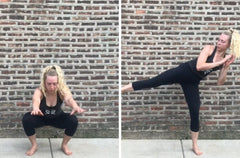
Jab | Cross | Shuffle

5 BEGINNER HIIT WORKOUTS YOU CAN DO ANYWHERE
You now know the best moves. Now, it’s time to plug those into actual workouts that you can perform anywhere. There’s no equipment required for these routines!
1) 1-to-1 Circuit (10 mins total):
Choose 5 exercises, following a 30-second work-to-rest ratio, completing two rounds. Below is a sample routine. Simply plug in the exercises of your choosing!
|
Exercise |
Work (seconds) |
Rest (seconds) |
|
Tempo Squats |
30 |
30 |
|
Elevated Push Up |
30 |
30 |
|
Butt Kicks |
30 |
30 |
|
Bear Crawl |
30 |
30 |
|
Jumping Jacks |
30 |
30 |
2) Tabata (4 mins total):
This is as simple as it gets! Choose the hardest exercises for you (just one exercise), and follow a 20 seconds on/10 seconds rest format, for a total of 8 sets.
3) 40/20 Circuit (20 mins total):
Choose 5 exercises, this time following a 40-second work/20-second rest ratio, completing 4 rounds total. Here’s another sample workout for you. Use it as is, or plug in the moves of your choosing!
|
Exercise |
Work (seconds) |
Rest (seconds) |
|
Butt Kicks |
40 |
20 |
|
Tempo Squats |
40 |
20 |
|
Lateral Shuffle |
40 |
20 |
|
Mountain Climbers |
40 |
20 |
|
Fast Feet |
40 |
20 |
4) 20/10 Circuit (15 mins total):
Following this template, choose 6 exercises and use a 20-second-work/10-second rest format. Complete 5 rounds total. Here’s some beginner HIIT workout inspiration!
|
Exercise |
Work (seconds) |
Rest (seconds) |
|
Fast Feet |
20 |
10 |
|
Shuffle l Reverse Lunge |
20 |
10 |
|
Lateral Skiers |
20 |
10 |
|
Squat to Inchworm |
20 |
10 |
|
Bear Crawl |
20 |
10 |
|
Jab l Cross l Shuffle |
20 |
10 |
5) The Run Through (15 mins total):
Choose 15 exercises, and follow a 40-second-work/20-second-rest ratio. You can also do 35/25 or 30/30 to make it easier. Perform each exercise, one after the other, until all 15 are completed.
|
Exercise |
Work (seconds) |
Rest (seconds) |
|
Tempo Squats |
40 |
20 |
|
Fast Feet |
40 |
20 |
|
Up Downs |
40 |
20 |
|
Lateral Squats |
40 |
20 |
|
Lateral Shuffle |
40 |
20 |
|
Elevated Push Up l Mountain Climbers |
40 |
20 |
|
Bear Crawl |
40 |
20 |
|
Lateral Skiers |
40 |
20 |
|
High Knees |
40 |
20 |
|
Squat to Inchworm |
40 |
20 |
|
Shuffle l Reverse Lunge |
40 |
20 |
|
Power Lunge |
40 |
10 |
|
Squat l Lateral Kick |
40 |
20 |
|
Jab l Cross l Shuffle |
40 |
20 |
|
Jumping Jacks |
40 |
20 |
Be sure to push yourself as hard as you can with each of these HIIT workouts. Try not to rest at all during work time, but if you do, keep the position or just slow the tempo.
Bonus Beginner Routine: HIIT Treadmill Workout
We have another great HIIT workout that can be done on a treadmill. Be warned, this one is very intense and probably not best for beginners. Be sure to warm up first.
- Get on a treadmill, but don’t turn it on. This workout will take 16 minutes.
- Holding onto the treadmill bar in front of you, press into the treadmill with all your power and start to sprint (again the treadmill is off, so you will be using all of your power to move the belt. Maintain a sprint with your hands on the handle).
- Sprint for 15 seconds, then rest for 45 seconds (you can also do 10 seconds sprint, 50 seconds rest).
- Do this for 16 sets (or 16 minutes in total).
Enjoy treadmill training? Check out more great HIIT Treadmill Workouts!

Hiit and Weight Training Schedule for Beginners
Looking for a great schedule to follow? Look no further!
Full Body Training Schedule
|
Day |
Workout Description |
Intensity & Duration |
|
1 |
Full Body Resistance Workout |
Moderate |
|
2 |
Cardio (e.g., jogging, cycling, etc.) |
Moderate, 40 mins |
|
3 |
HIIT Workout |
High, 10 mins |
|
4 |
Rest |
N/A |
|
5 |
Full Body Resistance Workout |
Moderate |
|
6 |
Cardio (e.g., jogging, cycling, etc.) |
Moderate, 40 mins |
|
7 |
HIIT Workout |
High, 10 mins |
|
8 |
Rest |
N/A |
|
9 |
Rest or Repeat from Day 1 |
N/A |
Upper/Lower Body Training Schedule
|
Day |
Workout Description |
Intensity & Duration |
|
1 |
Lower Body Resistance Workout |
Moderate |
|
2 |
Cardio (e.g., jogging, cycling, etc.) |
Moderate, 30-40 mins |
|
3 |
HIIT Workout |
High, 10 mins |
|
4 |
Rest |
N/A |
|
5 |
Upper Body Resistance Workout |
Moderate |
|
6 |
Cardio (e.g., jogging, cycling, etc.) |
Moderate, 40 mins |
|
7 |
HIIT Workout |
High, 10 mins |
|
8 |
Rest |
N/A |
|
9 |
Rest or Repeat from Day 1 |
N/A |
**NOTE: ALL HIIT WORKOUTS WILL BE CONSIDERED FULL BODY, BUT THEY DO TYPICALLY TAX THE LOWER BODY AND CORE MORE**
For resistance training (weights or bodyweight workouts), a good goal for beginners is to do 8-12 sets for each muscle group per week. That’s sets, not exercises.
FAQs
Let’s answer some frequently asked questions about HIIT workouts for beginners.
Do HIIT workouts burn fat better than weight training and running?
In terms of reducing fat, HIIT and moderate-intensity workouts both burn fat, but, again, HIIT does it in much less time. The additional benefit that comes with burning fat through HIIT is that you can maintain and even build muscle (research study).
Can HIIT workouts build muscle?
Gaining muscle through HIIT is not guaranteed, as other factors like diet and the individual’s fitness level and body composition come into play, but it will surely be better for your muscles than steady-state running.
The gold standard of building muscle is weight training.
Is HIIT workout like cardio?
HIIT is similar to cardio, in that it burns fat and improves endurance. However, HIIT is more like a hybrid of resistance training and cardio, but a lot harder. HIIT offers additional benefits that cardio doesn’t, it is more efficient.
Can you do HIIT workouts every day?
As you can see, you won’t be doing back to back HIIT workouts, as that is too taxing on the body, especially for beginners. Space out your intense workouts, and do some moderate-intensity workouts as well. Both are effective. Moderate-intensity weight training is great for building muscle.
Also, add in some flexibility training throughout the week. Every few days, do a full body stretching routine. Just don’t do it before a workout!
Should I only do HIIT Training?
While we compared HIIT to weight training and cardio, we are not recommending that you only do HIIT workouts. An ideal workout plan will incorporate weight training (or resistance training of some sort – i.e. bodyweight calisthenics), HIIT, and cardio.
They all have their place in fitness. Utilize HIIT for burning fat, boosting metabolism, and keeping your body in tip-top shape; include resistance training for hypertrophy and strength; and perform cardio for endurance and a healthy heart. And when in doubt, it never hurts to enlist the help of a certified personal trainer to make sure your program is well rounded.
HIIT Workouts For Beginners: Final Takeaways
If you’re ready to get in shape quickly and burn calories like crazy, a HIIT workout plan is just what you need! Remember, it’s going to be hard, but the best part is that it isn’t going to require you to spend hours exercising to see results!
Pair these routines with resistance training, some LISS cardio, and a healthy diet, and you’ll be well on your way to meeting any goals you may have.
Battle on!
Interested in more great HIIT workouts? Check out the 6 Best Fat Burning HIIT Workouts For Weight Loss, HIIT Workouts For Women, and the Best HIIT Rowing Workouts!















